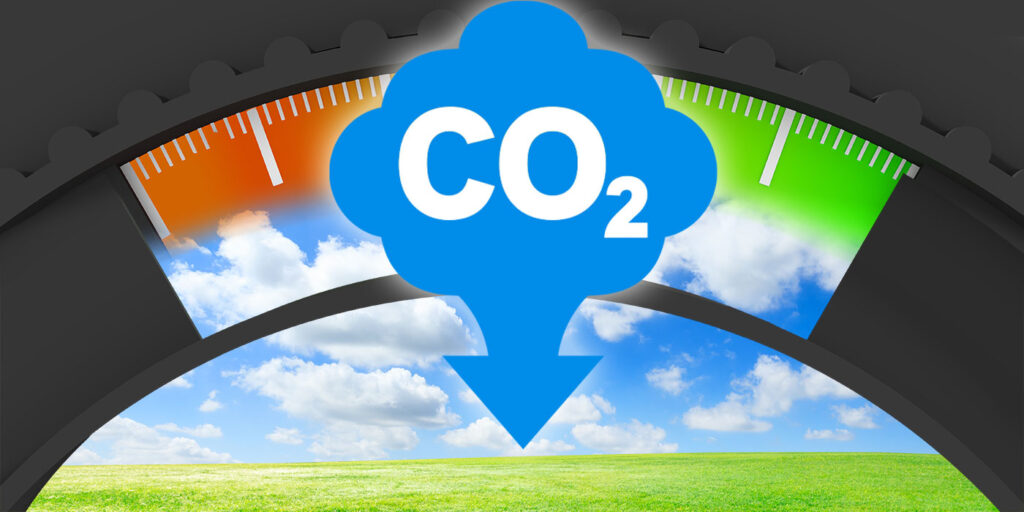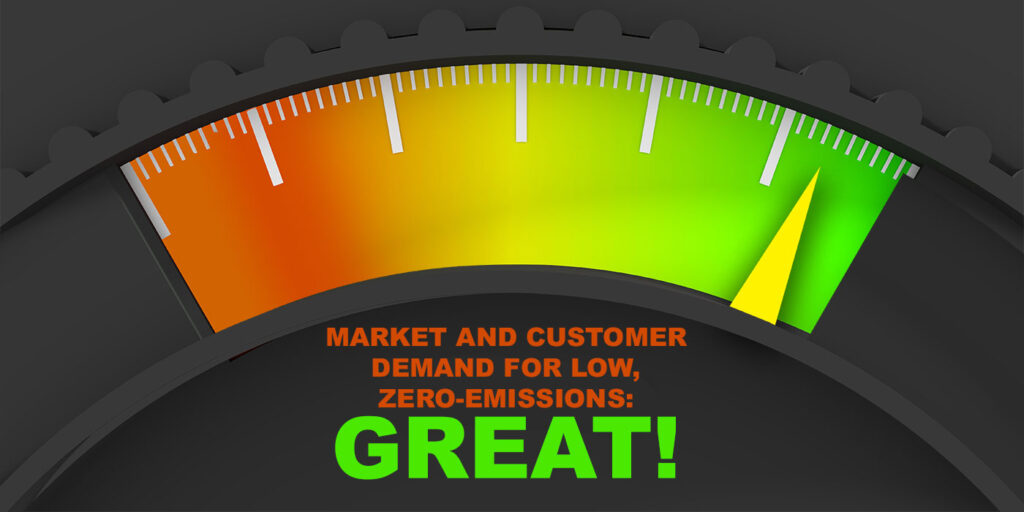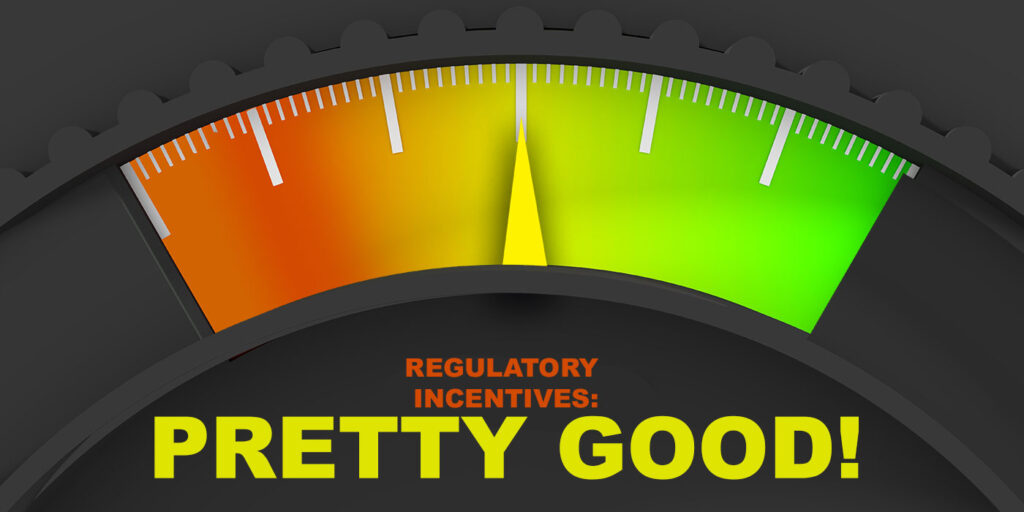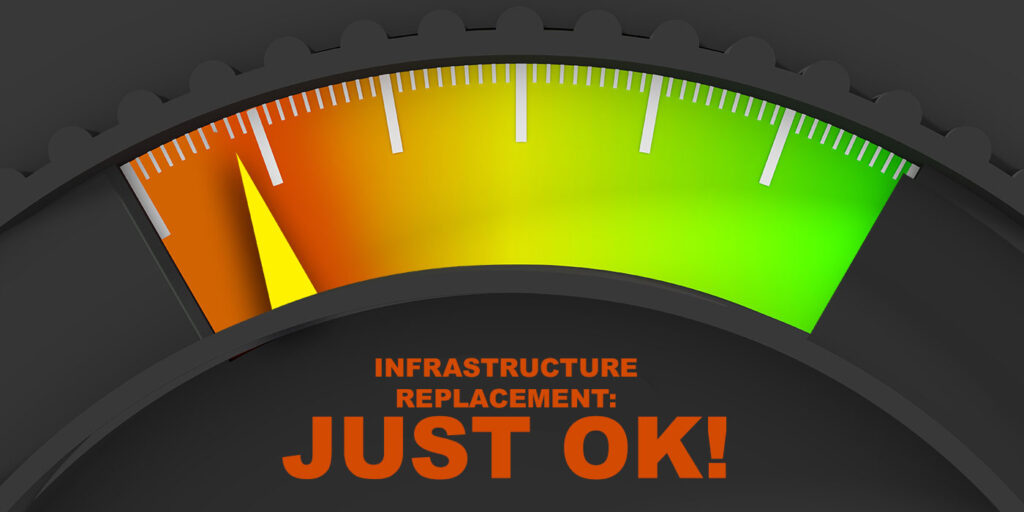In the opening days of 2021, Shell and Deloitte published a joint 104-page study on how to decarbonize the road freight sector called Decarbonizing Road Freight: Getting in Gear. In the study, more than 70% of the 158 freight-leading interviewees – from logistics companies to vehicles manufacturers to regulators–said they consider decarbonization as either the leading or a top-three priority for their organization.
The study sets the pace for 2021’s decarbonization relay race, a topic that Fleet Equipment ultimately determined to be trucking’s biggest trend of the year, and with another year’s worth of sustainability enhancements under the industry’s belt, now is the time to look back to see how the trucking sector has applied what we learned from the report.
The joint report identified three main challenges to decarbonization in the road freight sector:
- Lack of market and customer demand for low and zero-emission road freight
- Lack of regulatory incentives
- Complexity of infrastructure replacement
The internet loves to give grades, so let’s do that. I’ll rate what I’ve found to be the level of improvement on each of these challenges one by one.
Market and customer demand for low, zero-emissions
Improvement Score: GREAT!
We’re getting the easy one out of the way first. Is demand on the rise for zero-emission trucks? Just ask Tim Murray, Shell’s general manager of Commercial Road Transport – Americas.
“Customers have a keen interest in electric trucks and have a sense of urgency to explore pilot programs so they may test, learn, adopt and move their businesses forward,” Murray says. “The speed at which customers wish to electrify their fleets of heavy-duty trucks is exciting.”
[Editor’s Note: Murray certainly isn’t the only executive saying the time to decarbonize is now.]
“We expect the total cost of ownership of an electric truck will soon be comparable to that of a diesel-powered truck, and customers are looking for ways to upgrade their fleets using solutions that can deliver an impact now,” Murray continues.
Fleets haven’t been shy about stepping forward to adopt and test electrified vehicles where it makes sense. (Editor’s Note: FE published a series this year asking some major fleets how their electrification efforts are going. Click the links to see what Manhatten Beer Distributors, QCD, Schneider, and Penske have learned.) Industry leaders backed up that sense of urgency Murray talked about during this year’s COP26 meeting as, according to a survey by Samsara, 78% of operations and fleet leaders agreed they have a greater responsibility to prioritize sustainability efforts than other industries. Ninety-one percent of these leaders also felt significant pressure on their organization to set and meet aggressive sustainability goals, including from the government (54%), suppliers/partners (44%) and even competitors (44%) as sustainability becomes a differentiator.
RELATED: No doubt about it: Decarbonization is FE’s 2021 Trend of the Year
“Despite the barriers, the industry is facing a tipping point due to increasing regulatory and market pressures and will likely evolve faster than many expect,” Murray says. “In the coming years, one of the biggest changes we face as a society is the transition towards low-carbon forms of energy. This is change on a global scale that will take years to be fully realized. With around 3 million companies operating about 217 million vehicles, the transport sector accounts for roughly 9 percent of global carbon dioxide emissions–and demand for road freight is set to double before 2050.”
Regulatory incentives
Improvement Score: PRETTY GOOD!
According to the U.S. Environmental Protection Agency, the nation’s largest source of all greenhouse gas emissions is transportation. The largest sources of transportation-related carbon emissions come from passenger cars, medium- and heavy-duty trucks, and light-duty trucks, including sport utility vehicles, pickup trucks, and minivans, accounting for more than half of the emissions from the transportation sector.
While I won’t argue with you that regulatory incentives could be more plentiful, they are out there. President Biden’s Build Back Better Act includes a hefty load of EV tax credits. The EPA has hundreds of pages of green energy incentives on its website, and In California, Oregon, and British Columbia most companies can earn Low Carbon Fuel Standard (LCFS) credits when they charge their vehicles. There are also options like CARB’s Hybrid and Zero-Emission Truck and Bus Voucher Incentive (HVIP) Project, point-of-sale discounts for those operating in California communities.
Outside of regulatory incentives, here’s a pro tip for fleet managers who want to integrate electric powertrains into their fleets: Find a partner who can help the economics make sense. In Shell’s case, Murray says the company is constantly working to prioritize understanding customer needs so they can work toward specific solutions to help accelerate the sector’s journey to net zero.
“Our expertise across the energy system, combined with our customer relationships, positions us well to help accelerate decarbonization of the commercial road transport sector in three ways,” he says. “One: By understanding and assessing our customers’ decarbonization challenges; Two: By developing bespoke decarbonization pathways, and; Three: By identifying low-carbon products and solutions from across Shell or in conjunction with partners.
“Not only do we provide our customers with real-time data solutions and options to increase efficiency, but our portfolio of products and services allows us to drive up performance, from fuel cards to fleets mobility solutions, allows us to help drive up performance,” Murray adds. “Helping our customers decarbonize also means working with them to advocate for the policies, incentives and regulatory environment that can drive system-wide change.”
Infrastructure replacement
Improvement Score: JUST OK!
Here’s the big daddy of decarbonization challenges. Of the three main decarbonization impositions for the transportation industry identified in Shell’s report, Murray calls this infrastructure the “most prominent of the three – especially access to BEV and [FCEV] infrastructure.”
According to the report, more than 70% of study participants see hydrogen fuel-cell electric (FCEVs) and battery-electric vehicles (BEVs) as the most viable long-term, zero-emission heavy-duty truck technologies. And, in the meantime, Murray says liquefied natural gas (LNG), biomethane (BioLNG), renewable natural gas (RNG) and biodiesel, as well as high-quality carbon offsets, will help the sector reduce its carbon emissions through the transition to FCEVs and BEVs.
These “in the meantime” fuels are going to be of incredible importance while fleets wait for BEV/FCEV infrastructure to catch up with the demand for trucks with electric powertrains. Even the most passionate decarbonization zeal can only move as fast as the ecosystem allows.
“There is much emphasis on electrification and hydrogen to be the principal zero-emissions energy for road transport. Even with aggressive policy measures, slow fleet turnover rates and the selling off of older vehicles to the developing world, means nearly half of sector vehicles on the road worldwide are still likely to be diesel ICEs in 2050,” Murray says. “Natural gas and low-carbon biofuels – produced from biogenic and waste feedstock – will be needed for decades to decarbonize the legacy fleet of diesel vehicles, even in regions with the most aggressive decarbonization ambitions, and particularly in areas that rely on the secondary truck market and are slower in adopting new technologies.”
In September, Shell Lubricants announced a new design and new technology to engineer Shell Starship 2.0, which the company uses to demonstrate how currently available technologies can lead to carbon reduction in road transport. Featuring a new chassis and drivetrain in addition to a host of advanced technologies, Starship 2.0 achieved 254 ton-miles per gallon for freight ton efficiency–a 3.5 times improvement over the North America average freight ton efficiency for trucks which is 72 ton-miles per gallon. Shell Starship 2.0 achieved 10.8 MPG on its cross-country run, as compared to the 8.94 achieved by Starship 1.0 and the 6.4 MPG North American fleet average MPG.
“Immediate emission reductions can be achieved for fleets with diesel-powered trucks by improving truck design, employing digital solutions to optimize fleet management and using higher quality fuels and lubricants,” Murray says. “Shell is investing in digital technologies for route optimization and vehicle efficiencies, to help fleets lower emissions today.”
Get ready for the tipping point
The challenges Shell identified in its report are still very real. But the appetite coming from truck OEMs, fleet operators, logistics companies and end-customers to accelerate the decarbonization of road freight activities is palpable. And despite the barriers, Murray argues the industry is facing a tipping point due to increasing regulatory and market pressures and will likely evolve faster than many expect.
“We know that we need to help reduce emissions and scale up these newer technologies. We know that it will take time to work out a very complex set of challenges such as regulatory policy, OEM vehicle development, infrastructure investment, technology advancement, and increased adoption rates,” he says. “Our key driver is our customers’ needs. As the variables mentioned become clearer, we will ensure we have the right products available to meet customers’ energy needs.”
Decarbonization was FE’s 2021 Trend of the Year. Read about the big sustainability advancements from the past 365 here:

















